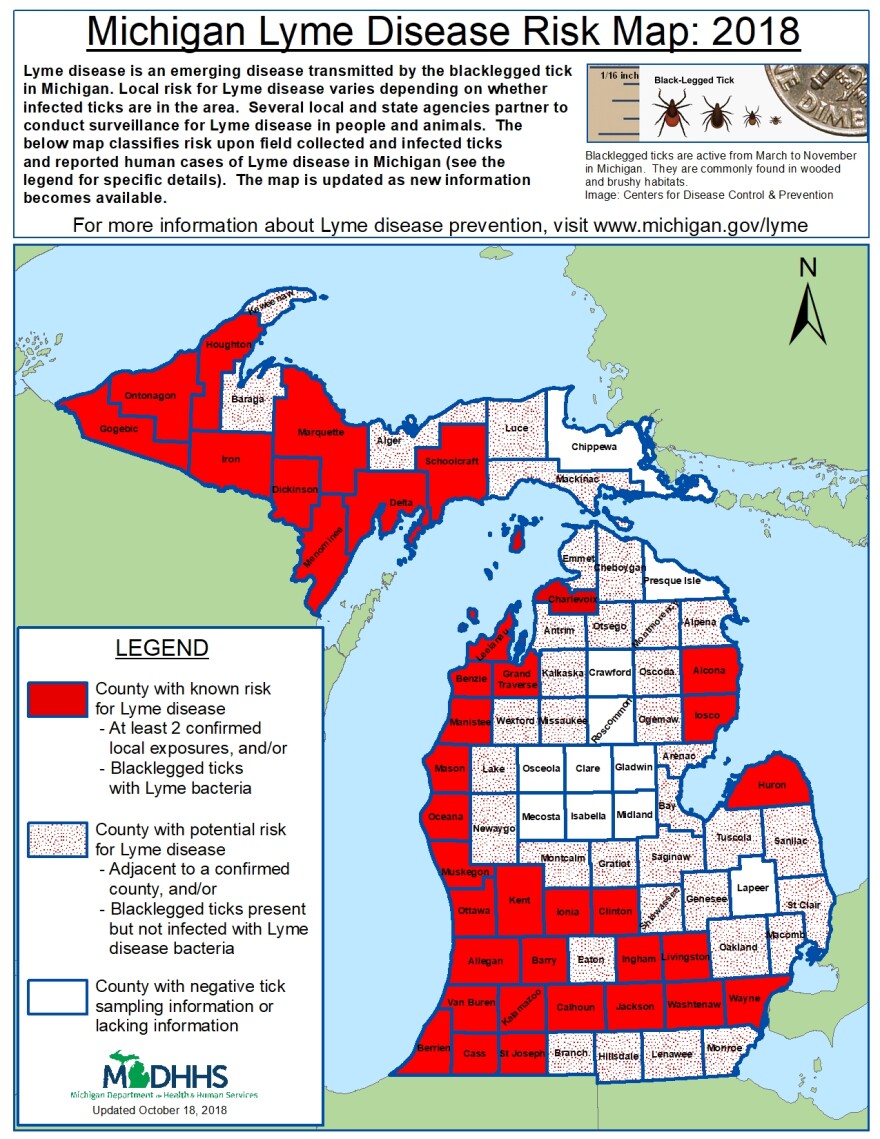New Year, new data. Climate change continues to affect the mitten state. Here are four places you should keep watching for it.
1. The coldest Great Lake is warming up
Lake Superior is heating up at an average of two degrees Fahrenheit per decade, making it one of the fastest warming lakes in the world. It's part of a trend: lakes in colder places are warming faster.

Jay Austin is a professor at the University of Minnesota-Duluth's Large Lakes Observatory, and he sent us an up-to-date time series of summer surface temperatures on the lake. 2017 and 2018 were fairly "normal" years, but Austin said 2019 could be another warm summer.
"Right now, we are on track for an abnormally warm winter, which will mean lower ice coverage in winter 2019 and likely a warmer summer 2019," he told us in an e-mail.
[Support great journalism like this by making a contribution to Michigan Radio]
Warmer water impacts almost everything that happens in Lake Superior.
"Temperature and ice cover are major drivers of not just ecosystems, but have real cultural, recreational, and commercial impacts as well," Austin said. "My major concern is that a warmer Lake Superior is going to be more hospitable to invasive species."
Scientists also believe recent unprecedented cyanobacterial blooms on the lake are tied in part to warmer temperatures.
2. Spreading Lyme disease risk
Black-legged ticks, the kind that carry Lyme disease, weren't recorded in the Lower Peninsula until the early 2000s. Scientists theorize that mass deforestation in Michigan in the late 1800s removed the ticks' habitat, and they were only able to re-emerge after the return of the forests. They've been spreading ever since.

Climate change could provide an advantage for the ticks by making winters less harsh.
"One of the ways that ticks can die or fall off is in the winter, in the overwintering," says Erik Foster, Medical Entomologist with the Michigan Department of Health and Human Services. "We have the theory that, as climate change continues, it will just be more favorable for these ticks."
The most up-to-date information on Lyme disease risk in Michigan can be found here.
3. More intense rain and flooding
In 2018, we reported on catastrophic flooding that hit Houghton County in Michigan's Upper Peninsula, and on how climate change is expected to make intense rainstorms more frequent.
Jeff Andresen is Michigan's state climatologist and a professor at Michigan State University. He says increases in rain and flooding pose the greatest climate change-related threat to Michigan's economy.

"It's fairly clear that economically, our greatest single weather-related problem or challenge here in our part of the world [is] heavy rain events and flooding. That stands above everything else, and those types of events, unfortunately, are increasing over time."
[Receive Michigan Radio news right in your inbox by signing up for our newsletters]
4. Longer growing seasons
Andresen says that warming in Michigan has lengthened the growing season, weighted more toward an earlier spring.
"The last freezing temperatures of the spring season are becoming earlier, and the first freezing temperatures of the fall are getting a little bit later," he says. "Our frost-free growing season has increased in most parts of Michigan [by] about a week and a half, just in the last 40 years."
It's not certain a longer growing season will be a net positive for farmers; warmer temps could also increase the types and abundance of pests.
*Correction: An earlier version of this story had a mislabeled graph of annual average temperatures in the State of Michigan. The y-axis was labeled as temperatures in degrees Celsius. That was incorrect. The graph has been updated to reflect that the temperatures are given in degrees Fahrenheit.







